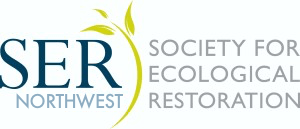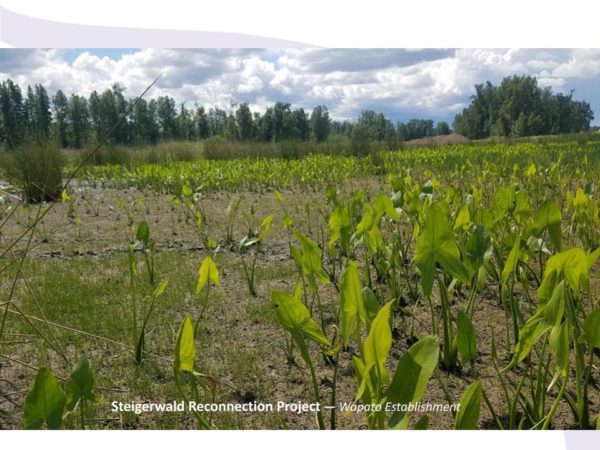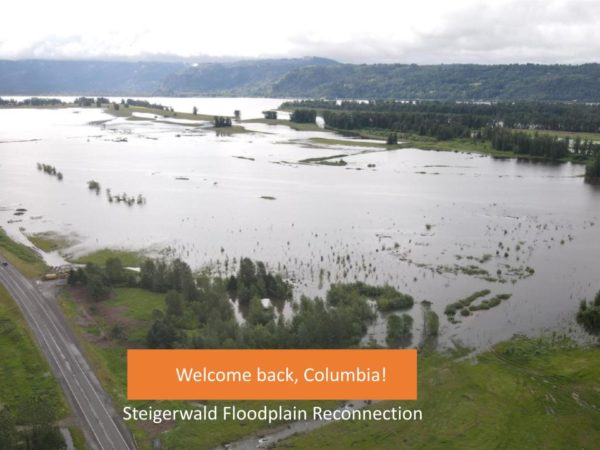
2022 Chapter Award Winners
Restorationist of the Year – Brenda Clifton, Senior Restoration Botanist, Skagit River Systems 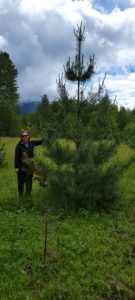
Brenda is responsible for the vegetation aspects of Skagit River System’s restoration work, including vegetation surveys, wetland delineations, management of planting crews, project planning, and materials procurement. She also oversees weed management on stewardship lands and runs a 5,000-plant native tree nursery. She has a B.S. in Botany from the University of Washington and an M.S. in Plant Physiology from Santa Cruz State University in Brazil. She has been working with the Habitat Restoration program of the Skagit River System Cooperative since June 2008.
Over the last several years, Brenda has become a restoration leader in the Skagit Valley. She regularly integrates rigorous monitoring and relevant research into her restoration projects which contributes to a body of knowledge that enables other practitioners in the region to increase the success of their restoration planting efforts. One example of her work is finding ways to reduce the negative impacts of heavy elk browse on plantings along the Skagit River where the elk population has boomed in recent years. 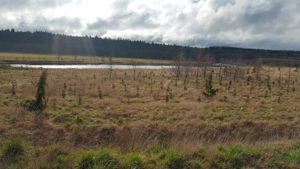
In 2019 she, along with others, launched an effort to build community among riparian focused restoration practitioners in Western WA by establishing the Western WA Riparian Work Group listserv and organizing an annual virtual conference that provides practitioners with an opportunity to share their knowledge with others. She has also been an active contributor to and board member for the Washington Native Plant Society, and ran the Central Puget Sound Nursery for several years. Brenda is collaborative and supportive of other practitioners, while being curious and having high standards for her work, and fully embodies the concept of reconnecting (others) to restoration.
Restoration Project of the Year – Steigerwald National Wildlife Refuge Floodplain Reconnection Project (Lower Columbia River Estuary Partnership and Curtis Loeb and Darlene Siegel with Wolf Water Resources)
Steigerwald Lake is a U.S. Fish and Wildlife Service National Wildlife Refuge situated along the banks of the Columbia near Washougal, Washington, at the Gateway to the Columbia River Gorge National Scenic Area. Through a collaborative partnership, the lands and waters of the Refuge and the Columbia River were recently reconnected. The collaborative Steigerwald Reconnection Project reconnected 965 acres of Columbia River floodplain after generations separated by a levee, reduced flood risk from Gibbons Creek, improved habitat for fish and wildlife, and created new trails for recreation at the Refuge.
Steigerwald Lake National Wildlife Refuge was first protected in 1987 and by 2019 comprised approximately 1,200 acres of wetlands, fields, woodlands, and a channelized Gibbons Creek. But since the 1960s until 2021, the Columbia River was cut off from the area by a 5.5 mile levee. The U.S. Army Corps of Engineers constructed the levee to reduce flood risk; however, it separated the Columbia River from its vast historic floodplain. And although the levee protected the Refuge and adjacent properties from Columbia River floods, it exacerbated internal flooding from Gibbons Creek. The creek was constrained to an artificially elevated channel as it flowed through the Refuge. Even moderate rainfall events often caused flooding that spilled over into the Port of Camas-Washougal and other nearby municipal, commercial and residential properties. This internal flooding required the Port to maintain a costly pumping system.
Project partners including the Port, the U.S. Fish and Wildlife Service and the Estuary Partnership worked together to develop the project with the shared goals of flood protection, restoring habitat and natural ecosystem functions, and improving recreation opportunities at the Refuge. The project cost more than $31 million dollars and took three years to construct. This project is a substantial contribution to the Lower Columbia Estuary.
https://www.estuarypartnership.org/our-work/habitat-restoration/steigerwald-reconnection-project
https://wolfwaterresources.com/#teamc
Special Award (Reconnecting to Restoration) – Okanogan Ecosystem Diagnosis and Treatment Model (EDT)
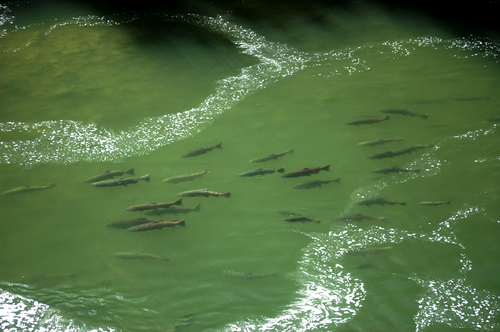
The 2022 special award was dedicated to an organization or individual demonstrating their commitment to “Reconnecting to Restoration” through the use of innovate tools or techniques in restoration planning or practice in the Cascadia bioregion. The 2022 award recipient is recognized for efforts to integrate the Okanogan Ecosystem Diagnosis Model (EDT) with long-term monitoring to support salmon recovery. These efforts were spear-headed by John Arterburn and Ryan Klett with the Okanogan Basin Monitoring and Evaluation Program of the Confederated Tribes of the Colville Reservation and supported by Eric Doyle with Confluence Environmental Company. 
The EDT is a habitat model developed to support the conservation and recovery of declining Pacific salmon and steelhead in the Pacific Northwest. This model was originally conceived of in the late 1990s and is used to transform complex environmental data into useful metrics that are used to help guide decision making to support salmon conservation and recovery. Long-term research, monitoring and evaluation data are being integrated into this tool to connect information on the salmonid life cycle and knowledge about fish habitat relationships to quantitative information about habitat conditions in the Okanogan subbasin. This tool is not only being used to identify priority habitats for conservation and restoration but also as a centralized clearinghouse and analysis platform that supports on-going adaptive management decisions.
https://afspubs.onlinelibrary.wiley.com/doi/10.1002/fsh.10721
WRIA 49 Watershed Plan – https://afspubs.onlinelibrary.wiley.com/doi/10.1002/fsh.10721
